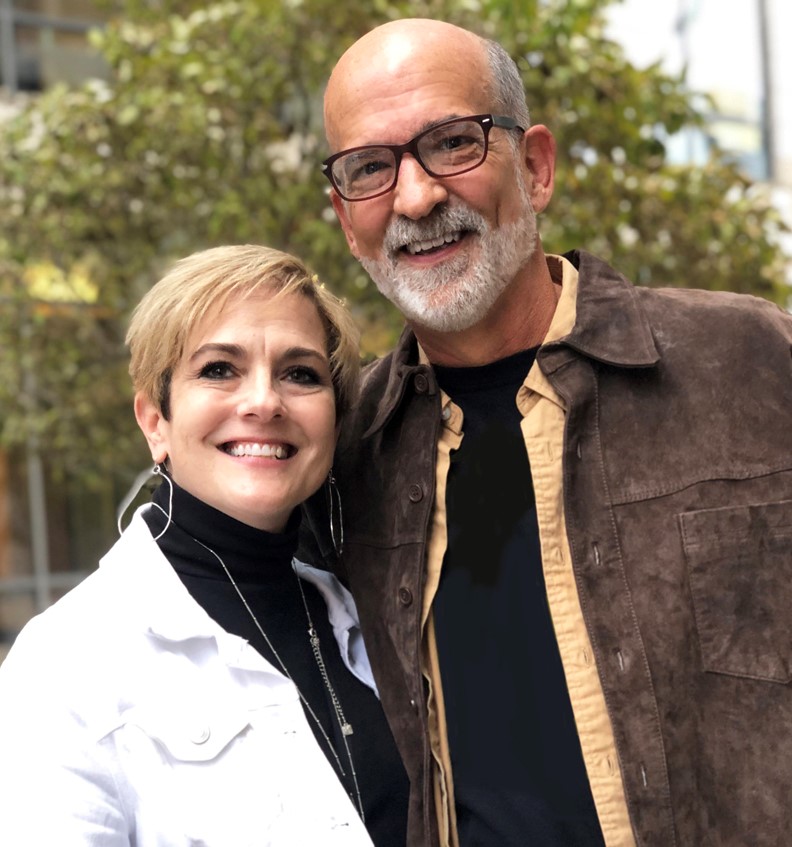What is Continuous Ambulatory Peritoneal Dialysis?
A diagnosis of chronic kidney disease (CKD) or end stage renal disease (ESRD) can be intimidating. You might assume that you’ll need to go to a dialysis center several times a week for long sessions, but for many that’s not actually the case. It’s possible to dialyze while travelling, working, and living your life, particularly with continuous ambulatory peritoneal dialysis (CAPD).
How Peritoneal Dialysis Works
Peritoneal dialysis (PD) is a form of home dialysis. There are 2 types of PD: CAPD and automated peritoneal dialysis (APD). Both use the blood vessels in the lining of your abdomen—your peritoneum—to naturally filter waste from your blood with a solution called dialysate. Dialysate goes through a peritoneal catheter into your abdomen, where it is left to dwell for a set period of time. While the solution dwells, it cleans waste products and extra fluid from your blood. When the dwell time is over, you’ll drain the solution through your PD catheter. Each time this process is completed, it’s called an exchange.
This type of dialysis is considered the closest to natural kidney function. It’s gentle on your heart and body. PD is designed to be done daily, typically with 3 to 5 exchanges done in any 24-hour period, which may improve your energy levels.
This type of dialysis is considered the closest to natural kidney function. It’s gentle on your heart and body. PD is designed to be done daily, typically with 3 to 5 exchanges done in any 24-hour period, which may improve your energy levels.
How Is Continuous Ambulatory Peritoneal Dialysis Different?
The main difference between CAPD and APD is whether you use a machine, called a cycler, to perform your exchanges. CAPD does not use a machine while APD uses a cycler. Both therapies are designed to be done over 24 hours.
For each CAPD exchange, you’ll attach a bag of dialysate to your peritoneal catheter then lift it to shoulder level using an IV pole so that gravity can pull the fluid into your abdomen. This process is called “filling.” Once the dialysate is in your abdomen, you’ll disconnect from the IV pole. The dialysate then dwells and you’re free to move around and enjoy your day until it’s time to drain the fluid. The actual process of filling and draining fluid takes roughly 30 minutes. This treatment is designed so that there is always dialysate in your abdomen, and your main time commitment is in how often you perform exchanges (usually 3 to 5 times a day) to swap out old dialysate for clean dialysate.
For each CAPD exchange, you’ll attach a bag of dialysate to your peritoneal catheter then lift it to shoulder level using an IV pole so that gravity can pull the fluid into your abdomen. This process is called “filling.” Once the dialysate is in your abdomen, you’ll disconnect from the IV pole. The dialysate then dwells and you’re free to move around and enjoy your day until it’s time to drain the fluid. The actual process of filling and draining fluid takes roughly 30 minutes. This treatment is designed so that there is always dialysate in your abdomen, and your main time commitment is in how often you perform exchanges (usually 3 to 5 times a day) to swap out old dialysate for clean dialysate.
Benefits of CAPD
The main benefit of continuous ambulatory peritoneal dialysis is that you’re not hooked up to a machine for any portion of your day. That makes it easier to travel and go about your daily routine. This also means that you won’t have a large cycling machine to store, which makes CAPD ideal for people in smaller living spaces. Additionally, since APD and CAPD are performed using a peritoneal catheter, you won’t need needles to dialyze.
Considerations Before You Get Started
All forms of dialysis require an access site. For PD, that means a peritoneal catheter. This is a flexible hollow tube, about the size of a straw, that’s inserted surgically, usually into your abdomen. You’ll need to keep your catheter access site clean and inspect it regularly to avoid infections.
You’ll also need space to store equipment and an address to ship supplies to. Even though CAPD doesn’t require a large cycling machine, you will still need to store dialysate, an IV pole, masks, antibacterial hand soap, hand sanitizer, and a heating pad to warm up the dialysate.
You’ll also need space to store equipment and an address to ship supplies to. Even though CAPD doesn’t require a large cycling machine, you will still need to store dialysate, an IV pole, masks, antibacterial hand soap, hand sanitizer, and a heating pad to warm up the dialysate.
Helping You Thrive
If you’re interested in exploring continuous ambulatory peritoneal dialysis as a dialysis treatment option, talk to your kidney doctor and care team to review all the choices available to you. As always, your care team is available to support your health and well-being.
Suggested topics
Potential Cardiovascular Benefits of Home Dialysis
For people living with end stage renal disease (ESRD) and kidney failure, cardiovascular health is particularly important. If your kidneys fail, they are no longer working to remove excess fluid, waste, and toxins from your body...
What to Eat and Drink on Peritoneal Dialysis
Choosing home peritoneal dialysis (PD) for treatment at stage 5 chronic kidney disease (CKD) can give you greater flexibility lifestyle in...

New to Kidney Disease—Rob Starts Peritoneal Dialysis
In February 2020, Rob Barge entered a world of health and lifestyle changes, without much warning. A visit to the emergency room in the middle of the night revealed he had...
Read More